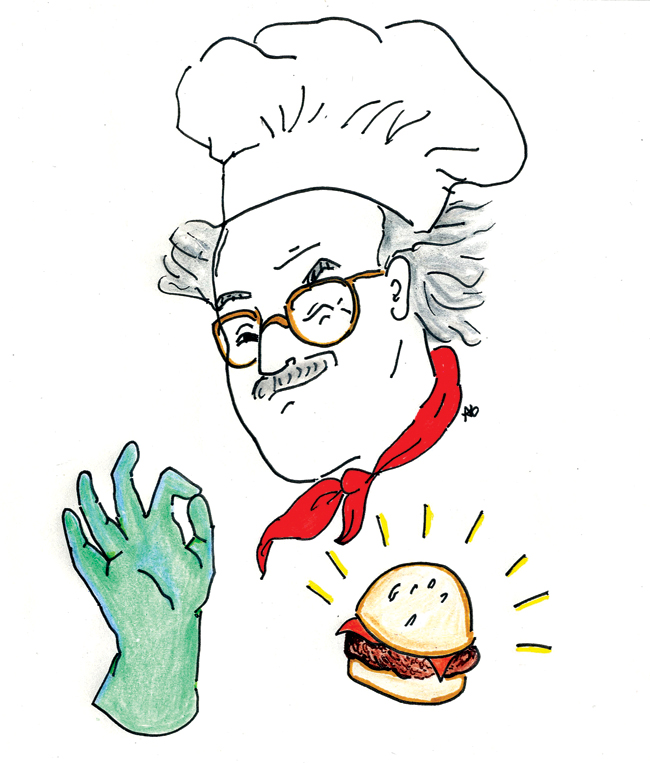
Hamburger Without the Cow
It’s been the subject of science fiction in the past, but a Dutch group is finally in the process of making lab-grown meat a reality in the form of a $330,000 hamburger. Made from stem cells, the burger will be more of a proof of concept at this point than a just-around-the-corner reality. But if the process pans out, the benefits could be enormous. Meat made in the lab would be more sustainable, reducing the environmental footprint of a given meal by up to 60 percent, and would also not necessitate killing massive amounts of animals in factory farms. The burger, ordered this week, may not be available until the fall and won’t likely win any food competitions, but it promises a taste of what’s to come.
Speedy Neutrinos May Have Cheated
Nearly six months ago, scientists reported that they had measured neutrinos traveling faster than the speed of light, which was thought to be impossible according to Einstein’s Theory of Relativity. Einstein’s theory is generally considered to be one of the strongest in physics, so while most scientists (including those who made the measurements) thought that there must have been some experimental error, there was an exciting possibility that we may have been on the cusp of an exciting new discovery. This week, though, researchers pinned down two items (one in the timing gear of the machine and another in a wiring connection) that they think may have been the source of the problem. Further tests in May should cement whether or not the laws of physics need to be rewritten.
Men Not Going Extinct Anytime Soon
A new study refutes a previous report which suggested that the Y-chromosome, the determiner of the male sex of an individual, is running out of genes and may go extinct in the next few million years. The Y-chromosome of our ancestors from 300 million years ago had 1400 genes, whereas today, it has fewer than 100. However, this more recent study, published in Nature, shows that men haven’t lost a single gene in their Y-chromosomes in the past 6 million years and only one in the past 20 million, hinting that although the chromosome may have lost many genes in the past, it seems stable now. In other words, if the Y-chromosome’s going away, it’s still going to take quite a while.
Scientists Charged About New Images
A group at the IBM Research group in Zurich has devised a precise and delicate method of determining the electric charge distribution inside a molecule. The system involves a thin, sensitive device with a tip that’s kept at a constant voltage that moves over a molecule. Depending on the charge of a given part of the molecule, the tip is either attracted or repelled slightly. By noting where on the molecule the tip moves up and down, a map of the charge distribution can be determined and an image can be formed that gives scientists new insight into the sub-microscopic world.
Like a Planet-Sized Sauna
Our solar system contains three types of planets: rocky ones like Venus and Mars, gas giants like Jupiter and Saturn and icy giants like Uranus and Neptune. However, outside the solar system, scientists are discovering there may be other options. A new planet, designated GJ 1214b, found 40 light years away, seems to be a giant ball of hot, steaming ocean, with a large fraction of its mass coming from water. Scientists have been able to determine this by using the Hubble telescope to look at the infrared color of the planet’s sunset, which indicates a planet with a thick, water-based atmosphere. The discovery suggests that our current view of what planets are like may be much narrower than what the universe has in store.
Printed on Thursday, March 1, 2012 as: Lab-made burgers may soons help eliminate factory farms















